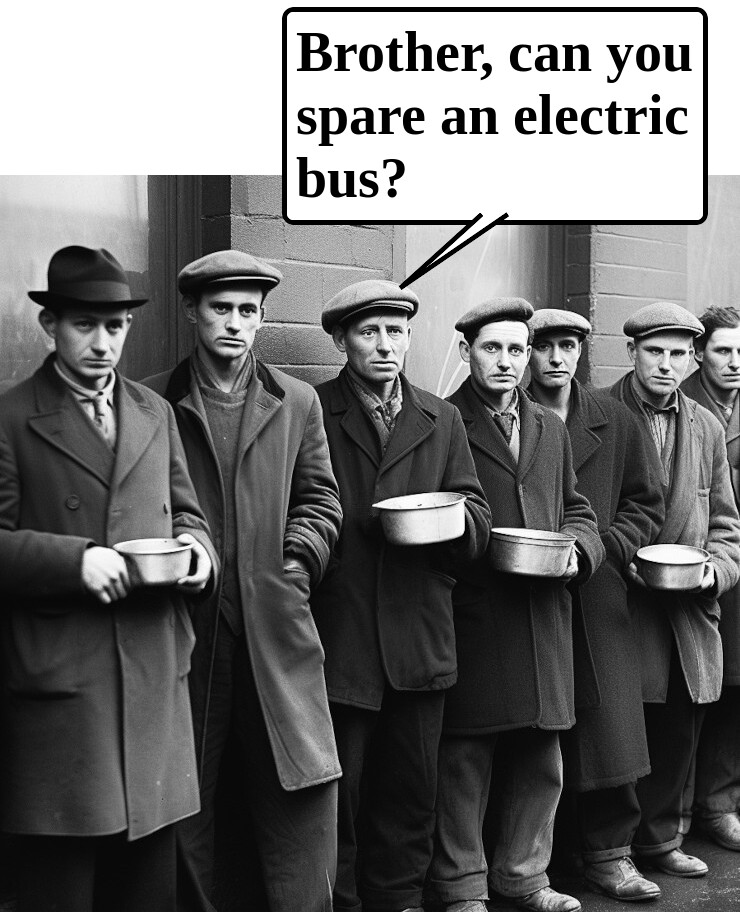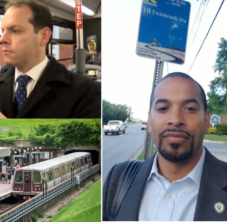A MoCo Show article from last December reported on the remarkable increase in the county’s bus ridership. “MCDOT’s Ride On system has provided more than 18.5 million rides during the current fiscal year [2024], compared with 15.4 million rides the previous fiscal year.”
The article quoted County Executive Marc Elrich’s reaction: “I am pleased to see riders returning to Ride On. We have made significant investments in our transit system, including our transition to zero-emission buses, as well as new services such as Ride On extRa and Flash Bus Rapid Transit, to adapt to changing community needs and encourage more people to use transit.”
Unreasonable free-market supporters such as myself find it deplorable that the bus system is supported by the county, even more deplorable that it is owned by the county. For us, boasting about 18.5 million rides means those rides may have precluded some other consumption more valuable to the taxpayers. On the other hand, there may be a social welfare case that 18.5 million rides meant 18.5 million less trips in private vehicles, or critical mobility for the underserved. On the other hand, maybe that 3.1 million ride increase was the result of a $50 million dollar investment: that would imply each ride cost $16, which seems a bit pricey.
Regardless, why is bus ridership a key performance indicator (KPI) for our county’s government? Were you to attend a meeting of Gaithersburg’s Lakelands Community Association (or any other community association) and ask the residents to list their top five concerns, my 500-to-1 bet is Ride On utilization would not be on the list. Neither is operation of a Ride with Pride bus. While those programs and many others the county runs are important to a few influential residents, most regular folks are concerned about inflation, condo fees, rent, traffic, crime, and stuff like that. In fact, for a long time the Montgomery County “values” that former County Executive Ike Leggett promoted had nothing to do with the residents’ welfare; they were the reflection of a few utopian socialists who forced their will on everyone else.
But no more. Maybe.
By now many of us know someone who worked for or contracted to the federal government and is out of a job. This is a big problem because it affects a lot of residents and those who depend on them. I’ve seen press releases, statements, and emails from the County Council members showing their concern and what they are trying to do about this seismic change. The county published Resources for Workers Impacted by Recent Federal Government Actions that gives some direction for those recently laid off. Representative Raskin and Senator van Hollen are also doing what they can for these residents. Even Maryland’s school systems, starved for qualified teachers, may try to hire unemployed feds.
My feeling is that all of these efforts will fall into the category of too little, too late. There are legions of local federal employees who provided little value to the national taxpayer, and expeditiously finding jobs for all of them is close to impossible. Maybe if local leaders had recruited large employers instead of focusing on small businesses, things would not be so dire right now.
Regardless, we do see that our elected officials can indeed align their priorities to those of their residents. It’s unfortunate that it took a federal regime change to trigger that empathy; it’s unfortunate they didn’t act a decade ago. What’s done is done. Going forward, I hope they will continue to focus on residents’ welfare, and put a long-term pause on nonsense such as outlawing plastic bags.




